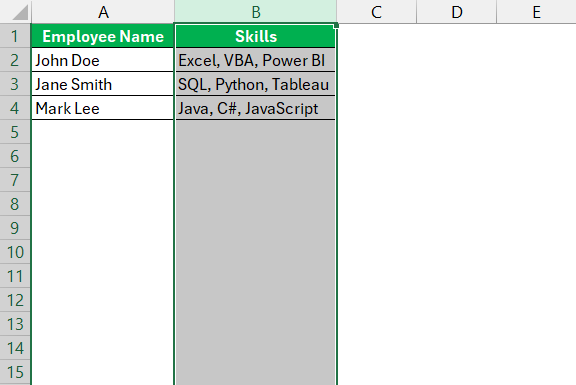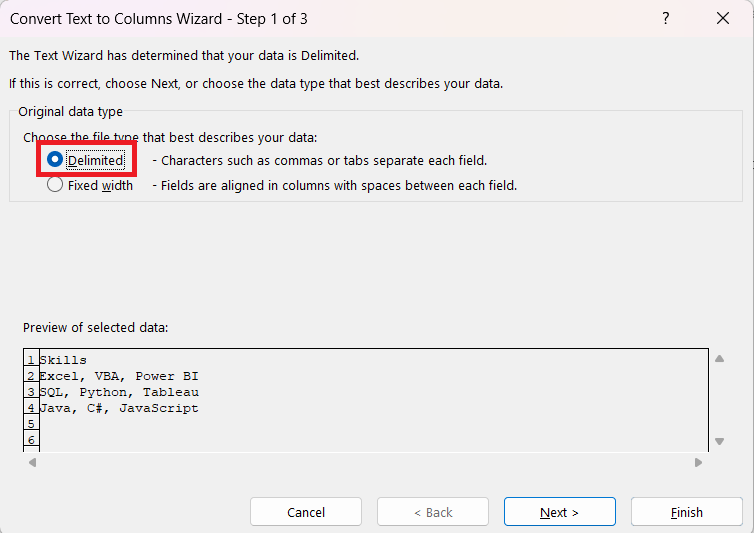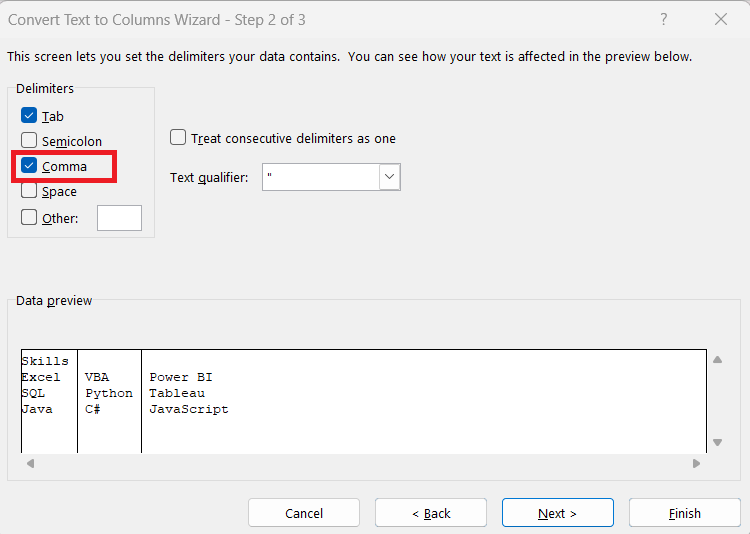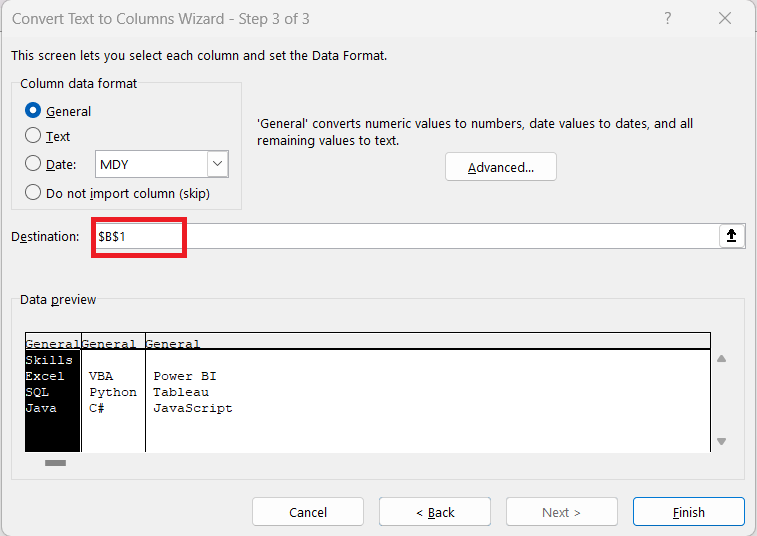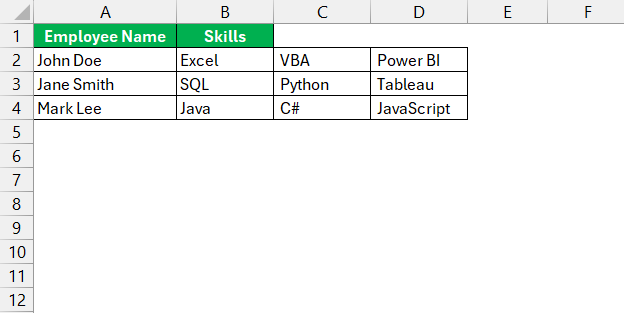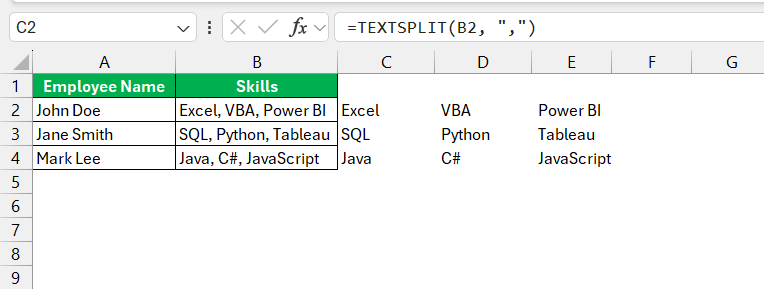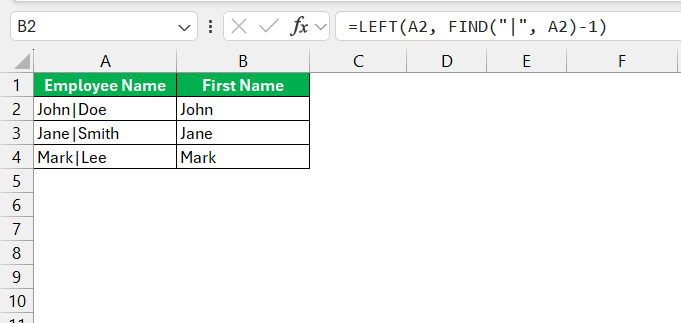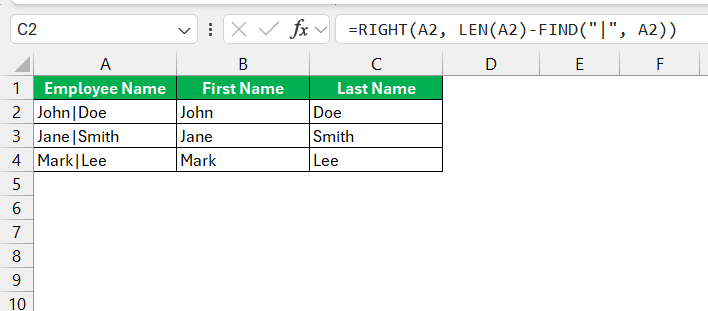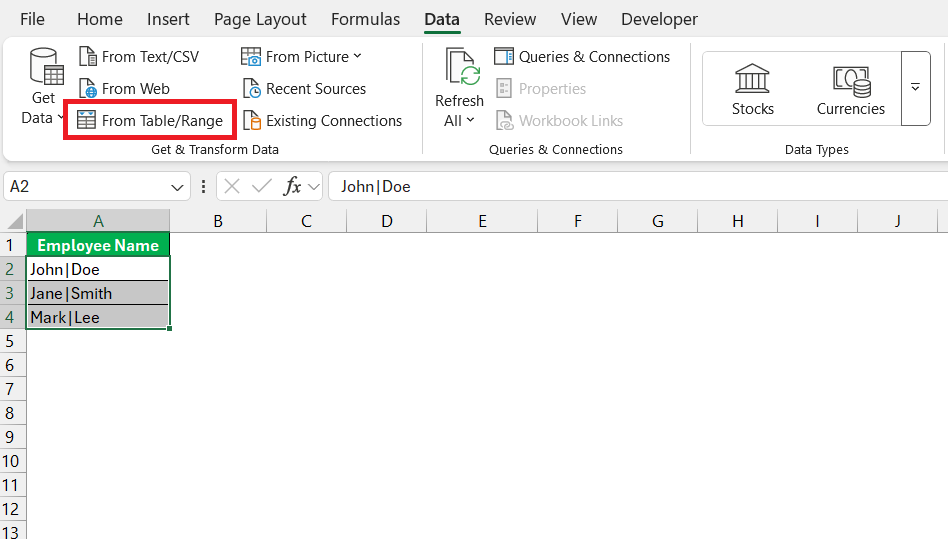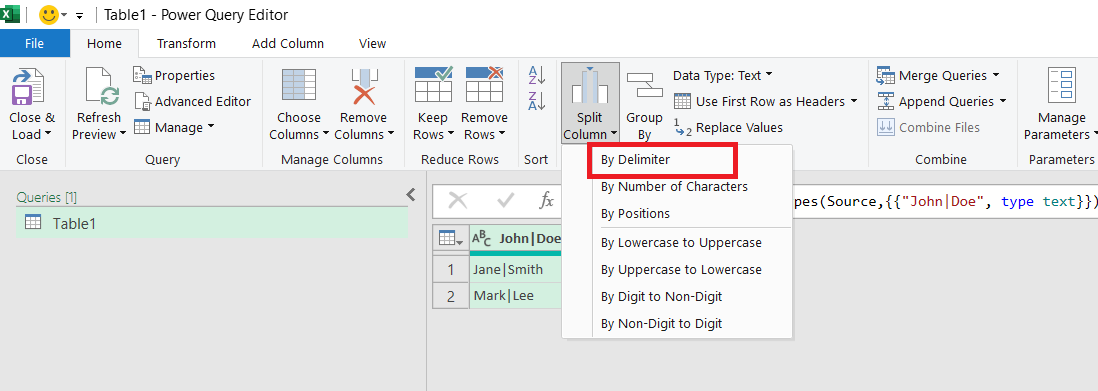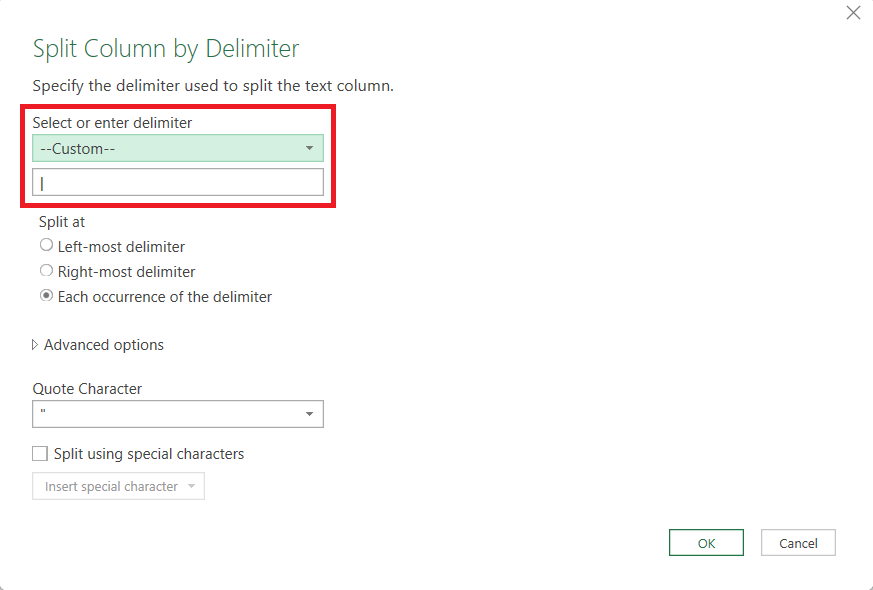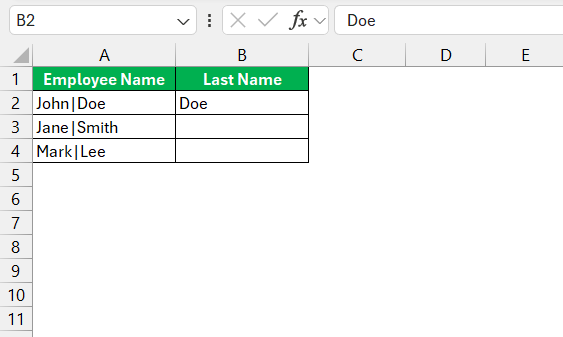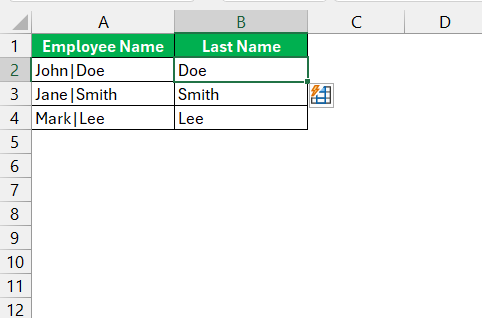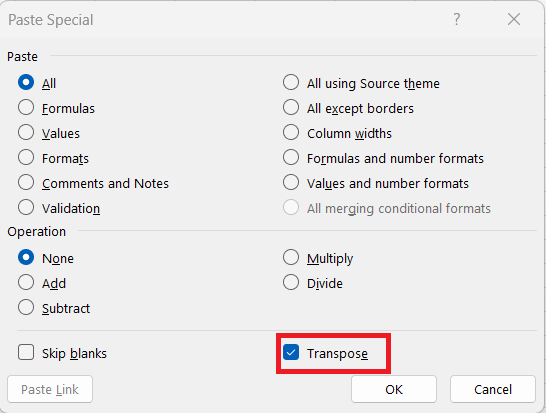When working with data in Excel, I often need to split text into multiple columns or merge values into a single cell while maintaining clarity. This is where delimiters come into play. Delimiters act as separators, helping me organize and manipulate data efficiently. In this guide, I’ll walk you through everything you need to know about using Excel delimiter, from basic operations to advanced techniques.
Key Takeaways:
- Delimiters in Excel help separate text into structured data, improving analysis.
- Common delimiters include commas, spaces, semicolons, and tabs, making data organization easier.
- Methods like Text to Columns, TEXTSPLIT, and Power Query provide flexible ways to split data.
- Flash Fill and formulas like LEFT, MID, and RIGHT enhance efficiency for complex text extraction.
- Mastering delimiters streamline data processing, saving time and improving accuracy.
Table of Contents
Introduction to Excel Delimiters
The Power of Organizing Data
Understanding the power of organizing data in Excel is like uncovering a secret superpower. It’s the foundational step in data analytics that turns a jumble of information into actionable insights. Splitting data into separate cells is a crucial part of this, providing a clear path to analysis and reporting that can transform raw data into strategic decisions.
What Is a Delimiter in Excel?
A delimiter is a character or symbol that separates values in a text string. Common delimiters include commas (,), semicolons (;), tabs, spaces, and pipes (|). Excel allows me to use these characters when importing, exporting, or splitting data.
For example, if I have a CSV (Comma-Separated Values) file like this:
Name,Age,Location
John,25,New York
Sarah,30,Los Angeles
The comma (,) acts as the delimiter, distinguishing each value within the dataset.
Methods to Use Excel Delimiter to Split Text
1. Text to Columns
The Text to Columns feature allows you to split text based on a specified delimiter.
STEP 1: Select the column containing the text.
STEP 2: Go to Data > Text to Columns.
STEP 3: Choose Delimited and click Next.
STEP 4: Select the delimiter (comma, space, semicolon, etc.).
STEP 5: Choose the destination cell, and click Finish.
The data will be split into different columns based on the Excel delimiter.
2. TEXTSPLIT Function
Available in Microsoft 365, the TEXTSPLIT function can split text into multiple columns or rows dynamically. To split text in B2 using a comma as a delimiter:
=TEXTSPLIT(B2, “,”)
To split using multiple delimiters (e.g., comma and space):
=TEXTSPLIT(B2, {“,”, ” “})
3. LEFT, MID, RIGHT with FIND (Best for Specific Position-Based Splitting)
If your delimiter is inconsistent, you can use text functions to extract parts of a string. For a name in A2 formatted as “John|Doe”, extracting first and last name:
=LEFT(A2, FIND(“|”, A2)-1) ‘ Extracts “John”
=RIGHT(A2, LEN(A2)-FIND(“|”, A2)) ‘ Extracts “Doe”
4. Power Query (Best for Large Data Sets & Automation)
For more complex splits, Power Query is an excellent option.
STEP 1: Select the data and go to Data > Get & Transform > From Table/Range.
STEP 2: In Power Query, select the column and choose Split Column > By Delimiter.
STEP 3: Choose the delimiter and press OK.
STEP 4: Click Close & Load to return the cleaned data to Excel.
5. Flash Fill
Flash Fill recognizes patterns and automatically fills the remaining data.
STEP 1: In a new column, manually type the first expected value.
STEP 2: Press Enter, then go to Data > Flash Fill (or press Ctrl + E).
Excel will detect the pattern and fill in the rest.
Real-world Applications and Examples
Saving Time with Practical Shortcuts and Tricks
Saving time in Excel is all about knowing the right shortcuts and tricks. For those who split data regularly, learning keyboard shortcuts for quick access to functions like ‘Text to Columns’ or ‘Paste Special > Transpose’ is a game changer.
Using ‘Ctrl + E’ to quickly access Flash Fill, or creating custom macros for repetitive tasks, also shaves off precious minutes.
Employing tricks such as setting up data validation to automatically check the results of a split or using conditional formatting to visually indicate errors streamlines the data processing workflow. These practical time-savers not only make us more productive but also enhance our agility in data manipulation, allowing us to allocate our attention to more complex analytical tasks.
How Excel Splitting Techniques Transform Data Analysis
The transformation in data analysis post-mastery of Excel splitting techniques is profound. No longer do we slog through unwieldy strings of information; instead, we wield Excel’s functionalities to swiftly partition data into digestible, analyzable parts. With data neatly distributed across rows and columns, we can apply filters, sort data, and carry out in-depth analysis with speed and precision.
Moreover, the capacity to split data enhances our ability to integrate multiple data sources and reconcile disparate formats, a common requirement in today’s data-driven landscape. Automated data flows, empowered by Excel’s capabilities, allow for real-time updates and analyses, turning raw data into a dynamic, interactive, and invaluable business asset.
FAQs on Mastering Excel Delimiters
What is a delimiter in Excel?
In Excel, a delimiter is a character or symbol that separates pieces of data within a text string. It signifies the boundary where one piece of data ends and the next begins, making it possible to organize and structure text to be processed into separate columns or rows. Common delimiters include commas, semicolons, tabs, and spaces.
What are the most common delimiters used in Excel?
The most common delimiters used in Excel are commas, semicolons, tabs, and spaces. These serve as standard separators in various data formats, including CSV files (comma-separated values) and other text documents where data segmentation is needed for clarity and organization.
Can you split data in a cell across both columns and rows?
As of my knowledge cutoff in April 2023, directly splitting data in a cell across both columns and rows simultaneously isn’t a native feature in Excel. However, you can first split the data into columns using the ‘Text to Columns’ feature or TEXTSPLIT function, then transpose the data to rows using the ‘Paste Special > Transpose’ option.
How can I separate data with mixed letter cases or digit combinations?
To separate data with mixed letter cases or digit combinations in Excel, you can use formulas like TEXTSPLIT or an array formula combining functions like MID, MIN, and IF. These enable precise segregation of text and numbers, or can handle case-sensitive separations when letter case matters within your data.
Are there any shortcuts for quick cell splitting?
Yes, there are shortcuts for quick cell splitting in Excel. For splitting text across columns, you can select the cell or range, then press ‘Alt + E’ followed by ‘D’, which opens the ‘Text to Columns’ wizard. For Flash Fill, which can sometimes be used for splitting data, the shortcut ‘Ctrl + E’ is quite handy.
John Michaloudis is a former accountant and finance analyst at General Electric, a Microsoft MVP since 2020, an Amazon #1 bestselling author of 4 Microsoft Excel books and teacher of Microsoft Excel & Office over at his flagship MyExcelOnline Academy Online Course.

